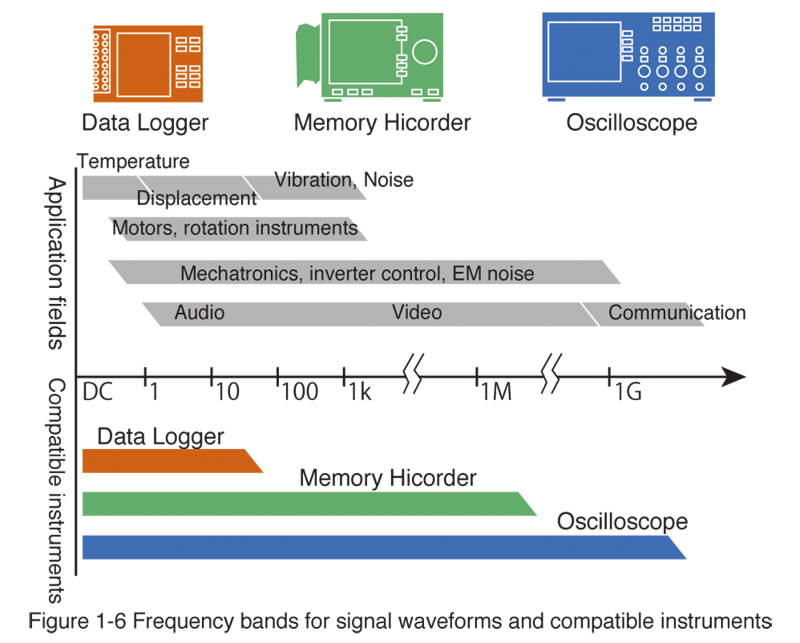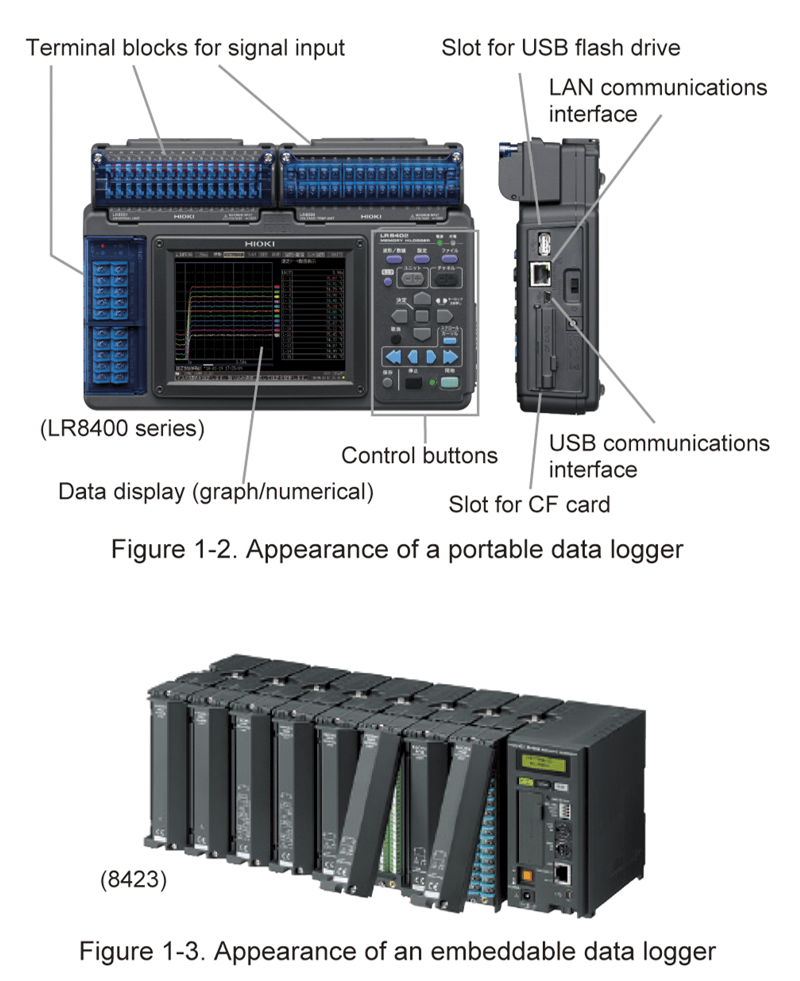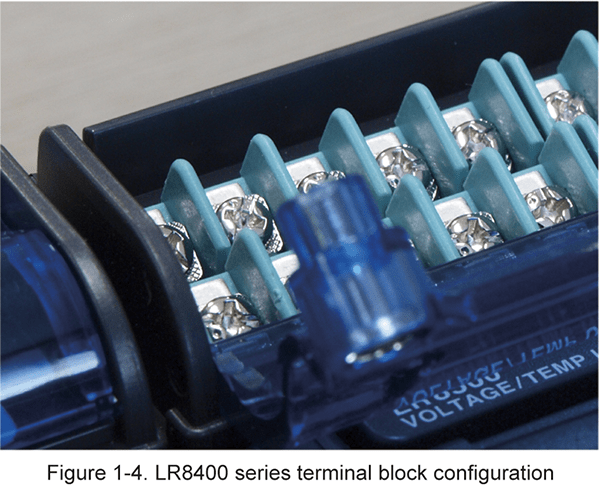What are multichannel data loggers? (overview)
Applications of data loggers
Data loggers, a type of waveform observation device used to process and record signals digitally, have a maximum sampling speed of 10 samples per second (10 Hz) or 100 samples per second (100 Hz), making them well suited to observing signals associated with slower phenomena compared to Memory HiCorders and oscilloscopes.
Principal applications include observation of temperature, weather, and static strain. They are distinguished by their low cost compared to other observation devices and their ability to accept input of numerous signals, in excess of 100 channels.
Appearance of data loggers
Figures 1-2 and 1-3 depict data loggers. These instruments have one or more terminal blocks for signal input, which they digitize and record either in internal memory or on a CF card or USB flash drive.
In addition to displaying input data in real time in graph or numerical form for operator review, data loggers allow past data to be viewed even as they continue to record input.
A LAN- or USB-connected computer can be used to control multiple loggers and to record or transfer data from the instruments.
Portable, embeddable models can simultaneously record a maximum of 600 channels.
Data logger input specifications
Data loggers can record the following types of signals (LR8400 series):
• DC voltage (up to a maximum of 100 V)
Output signals from signal converters and other devices, battery cell voltages, etc.
• DC current
Instrumentation signal output, for example 4 to 20 mA, which is converted to 1 to 5 V signals for input
• Thermocouples (types: K, J, E, T, N, R, S, B, W)
• Platinum resistance temperature detectors (types: Pt100, JPt100)
• Resistance (up to 200 Ω)
• Humidity (using a dedicated sensor)
• Pulse (with support for integration and RPM measurement)
• Digital signals (recording a value of 0 or 1 each recording interval)



